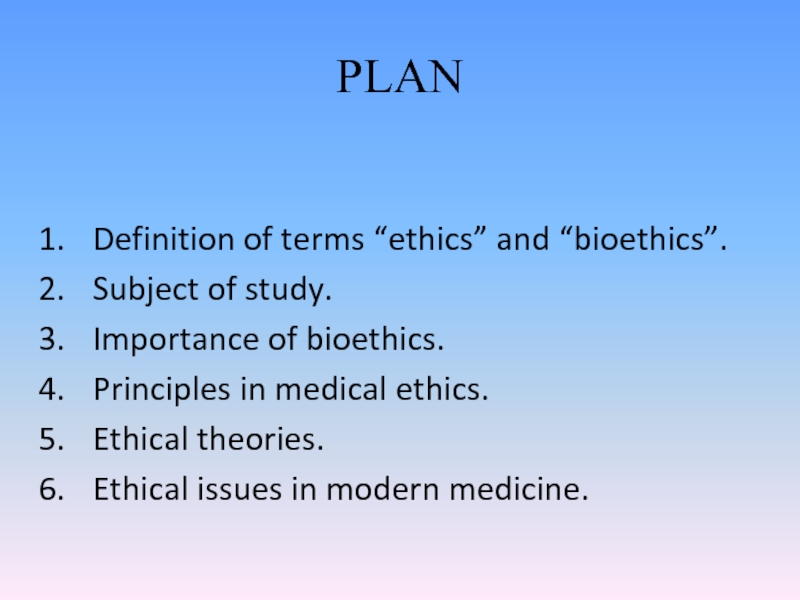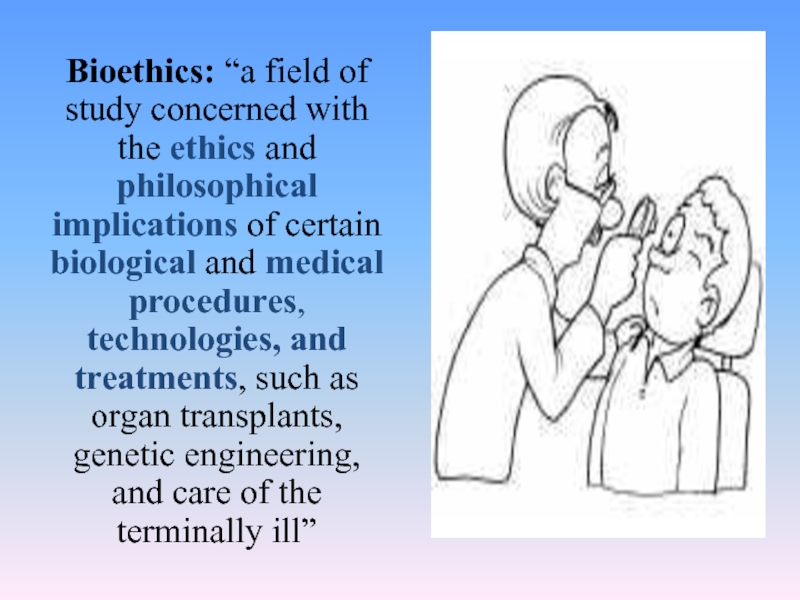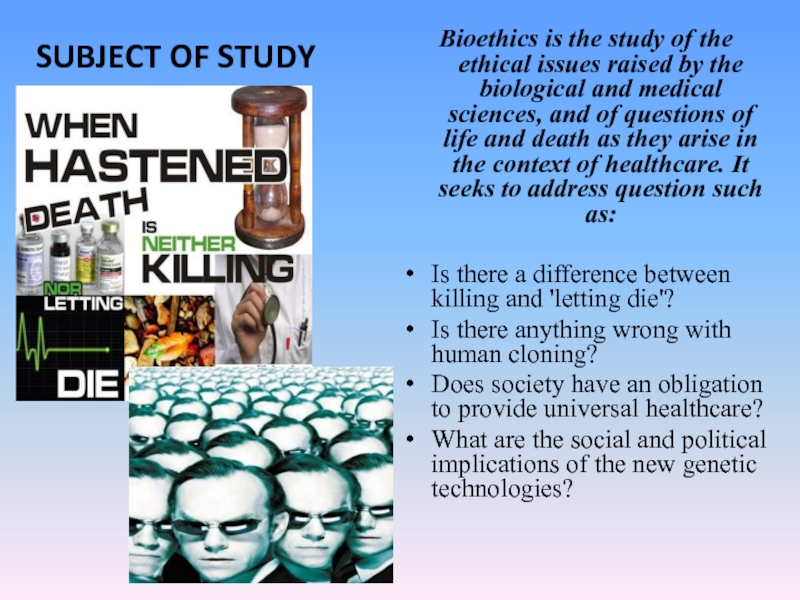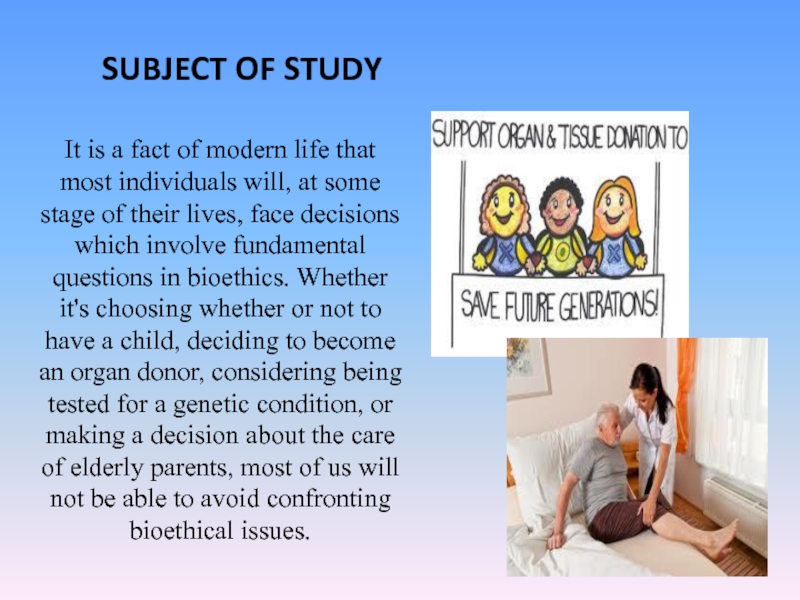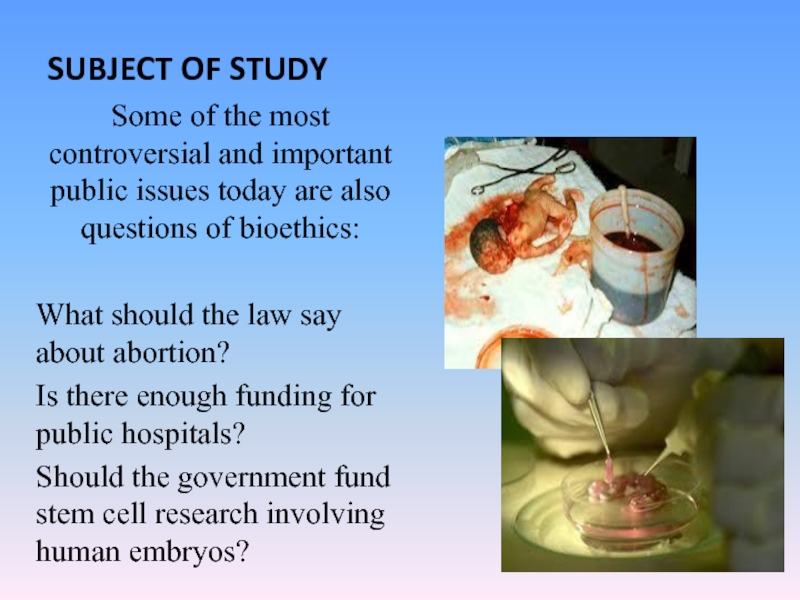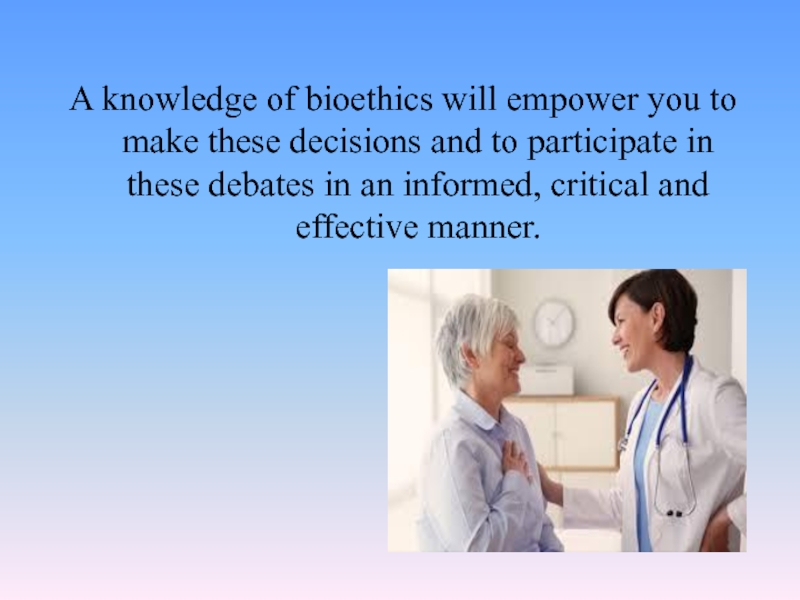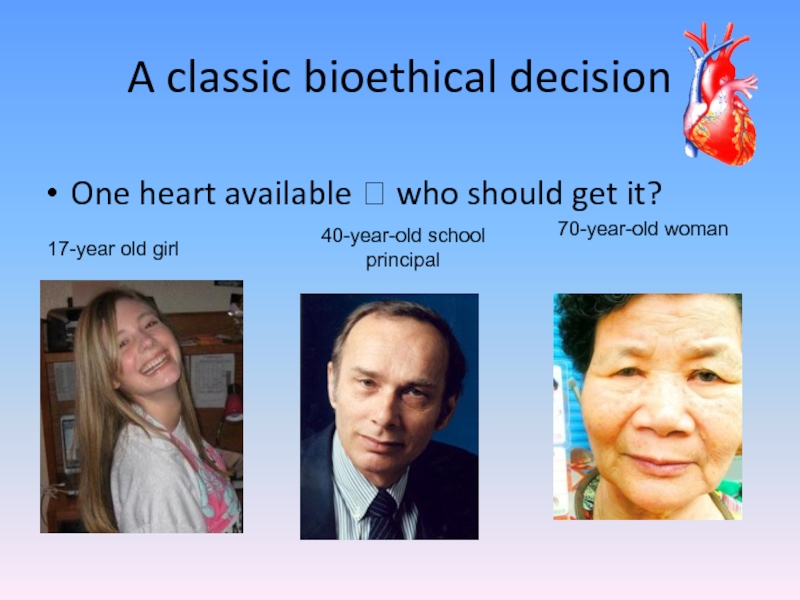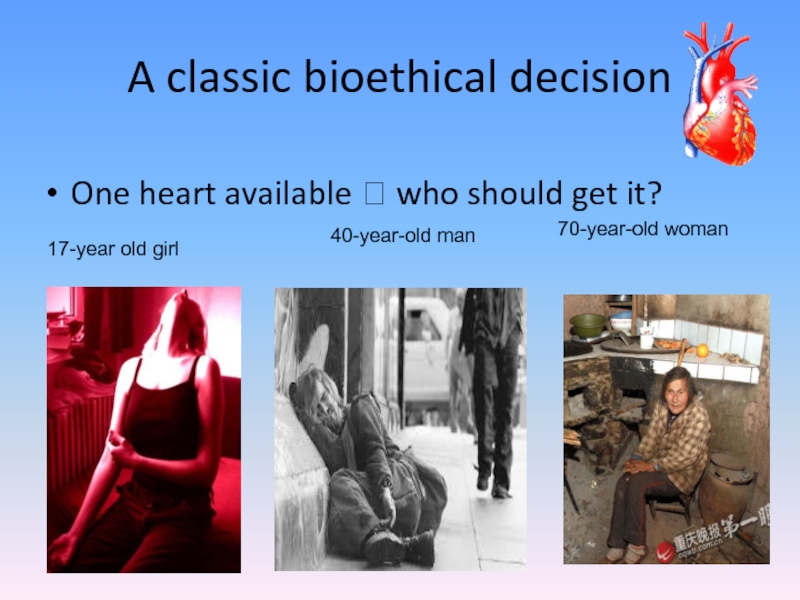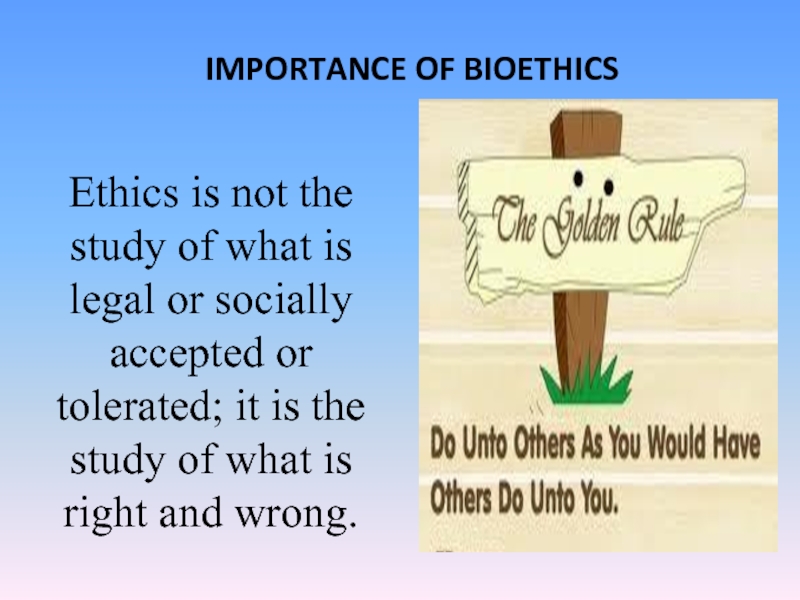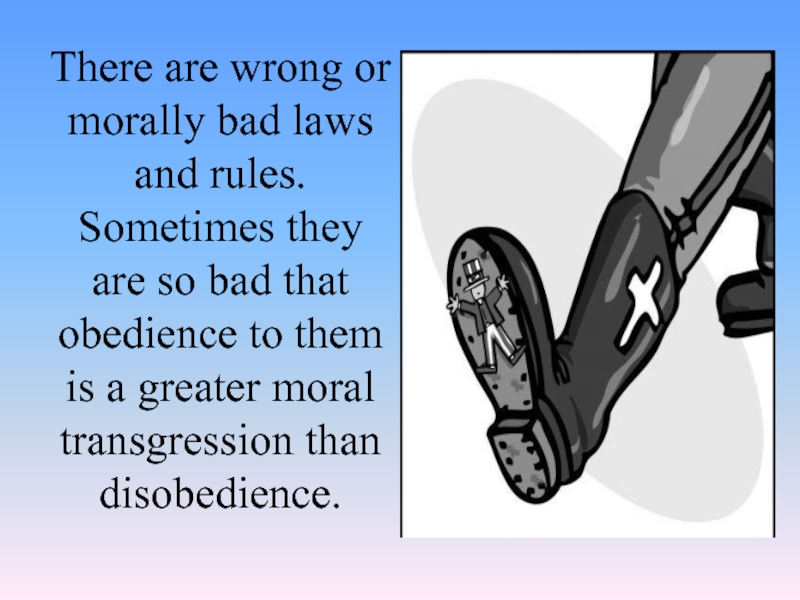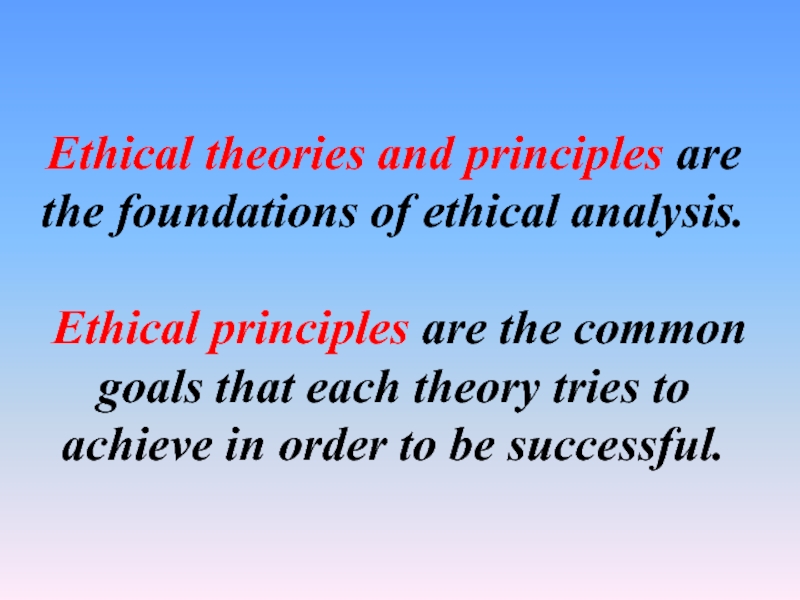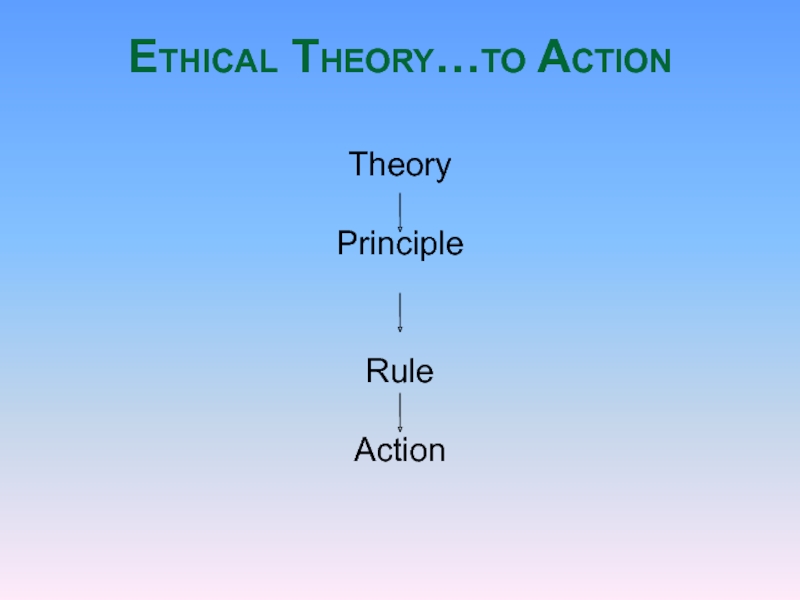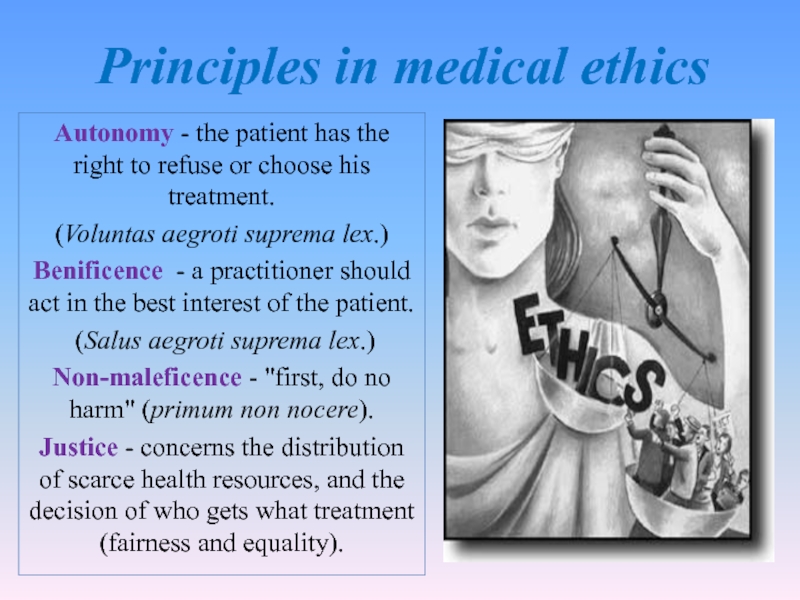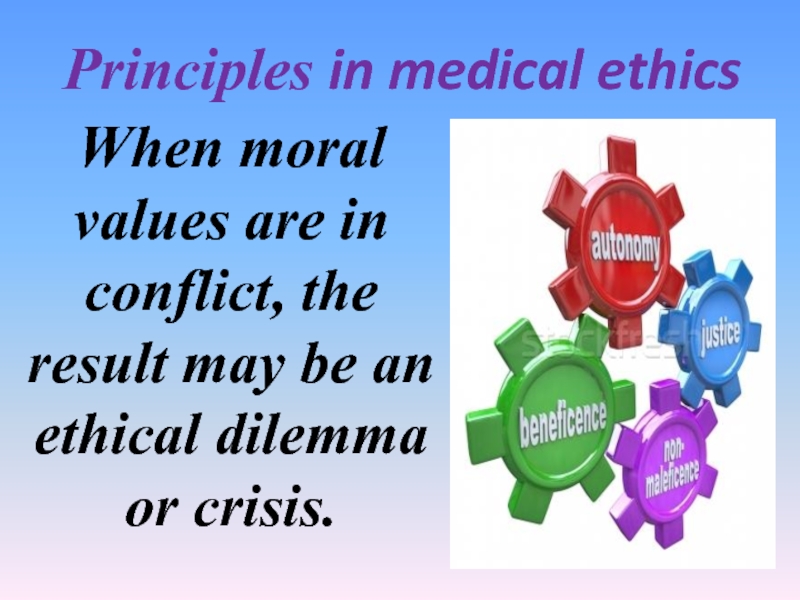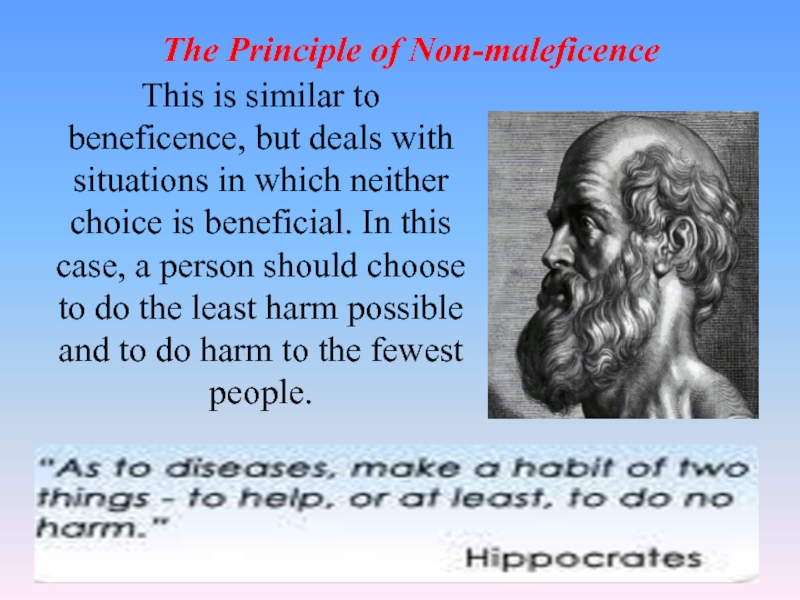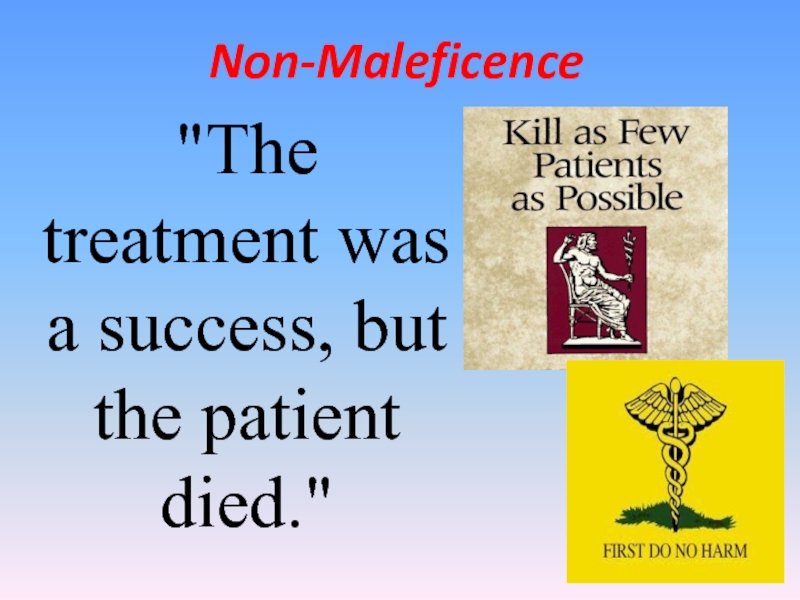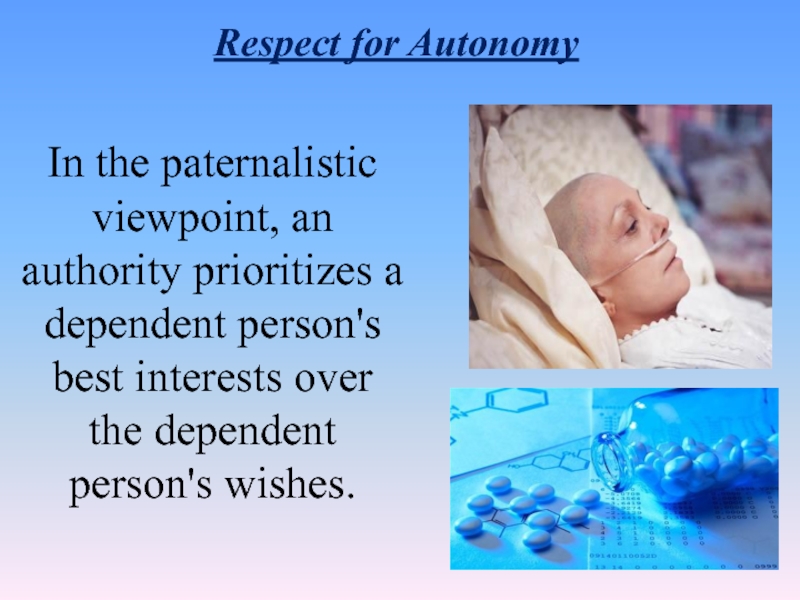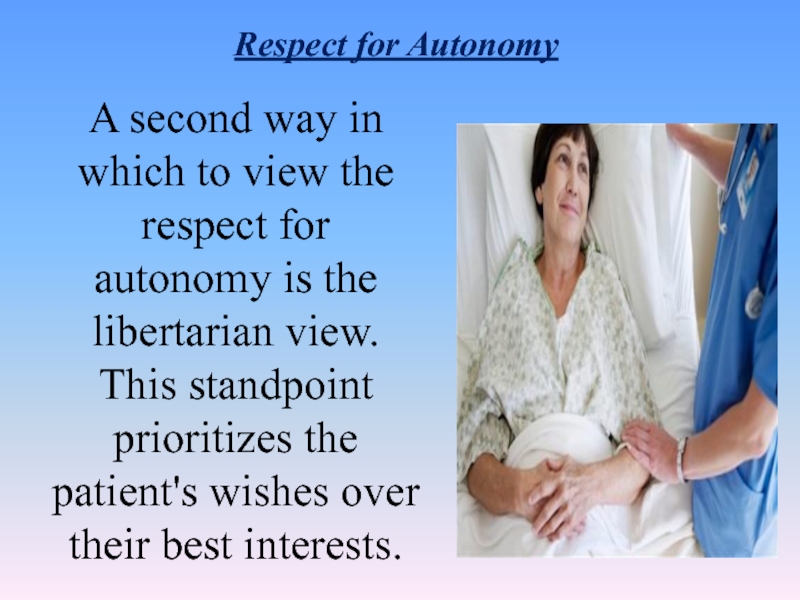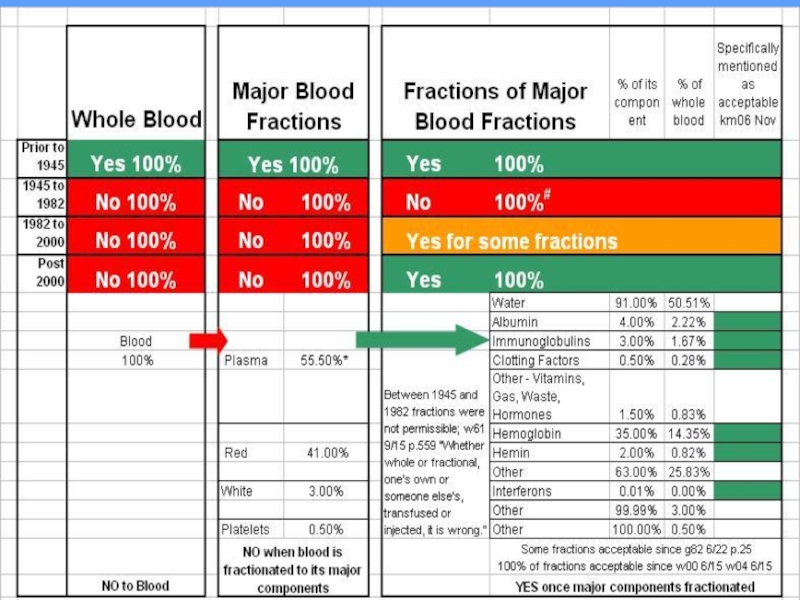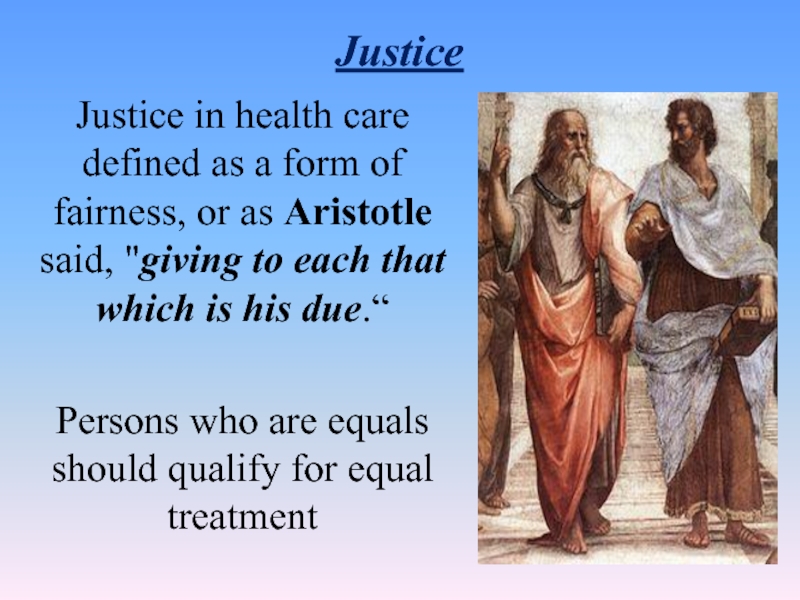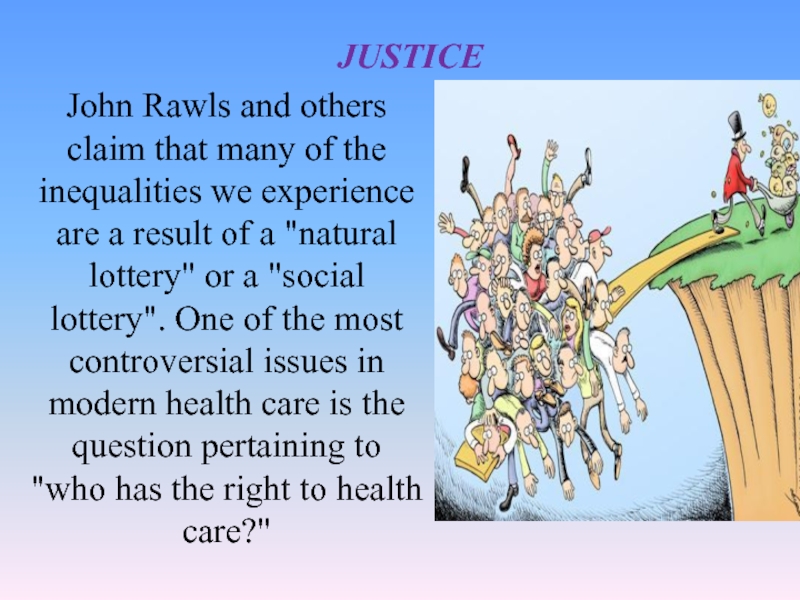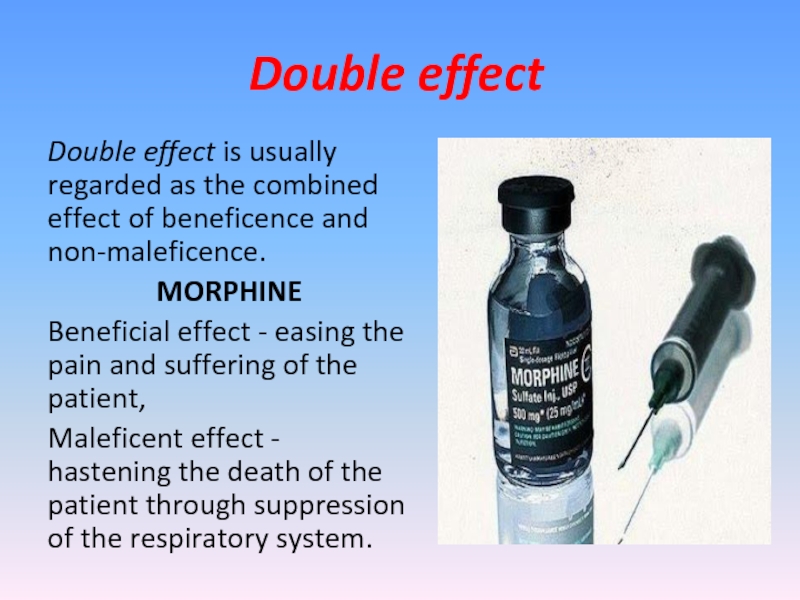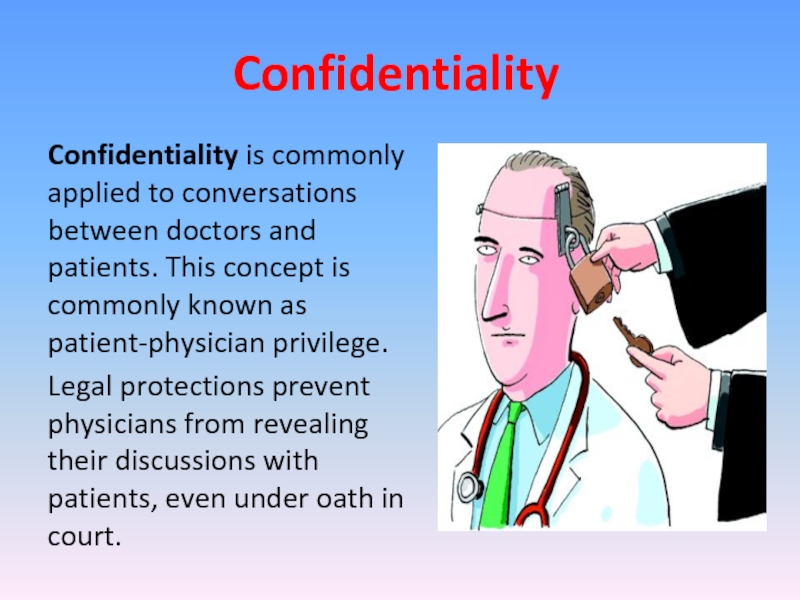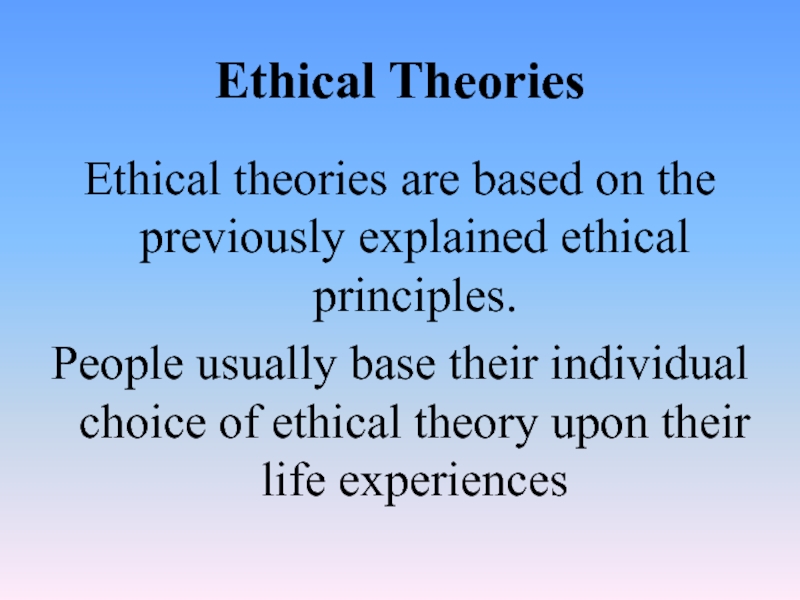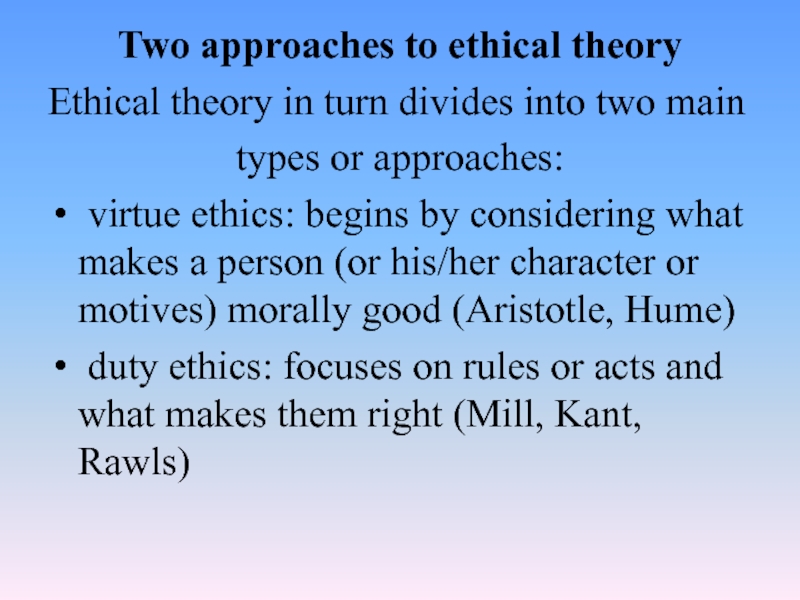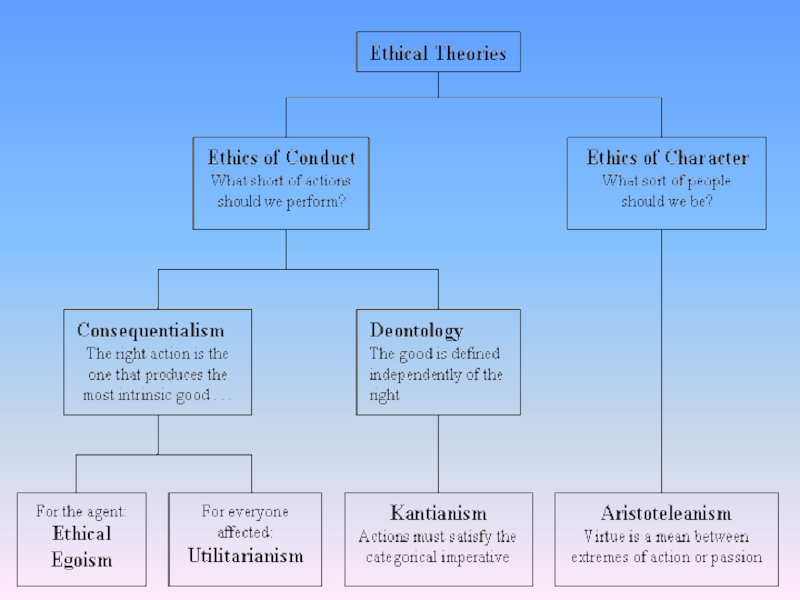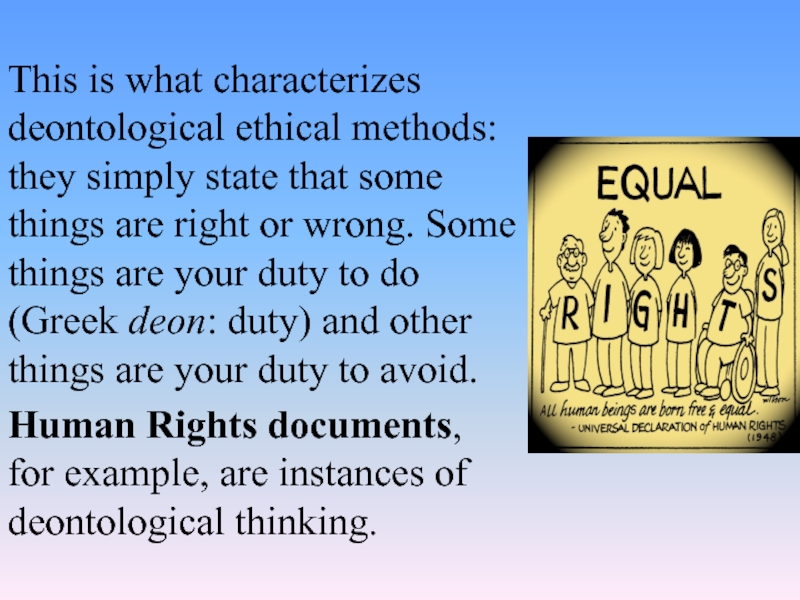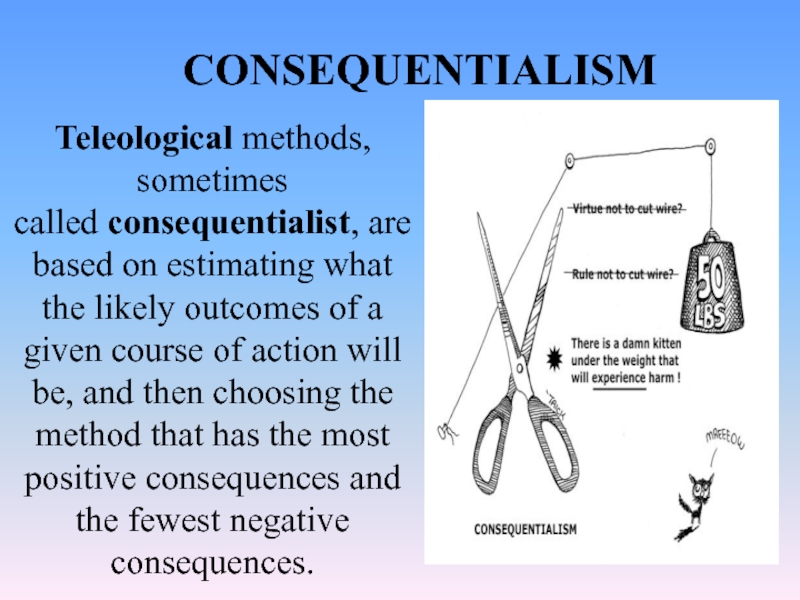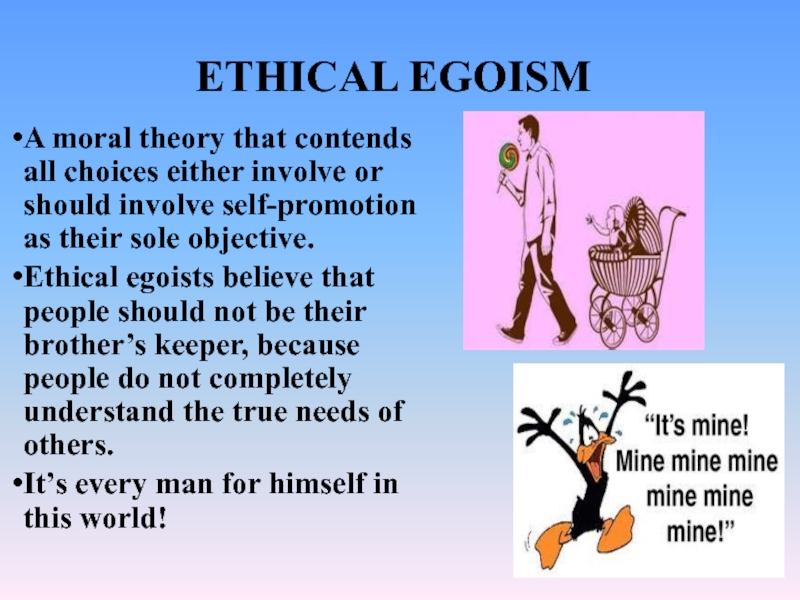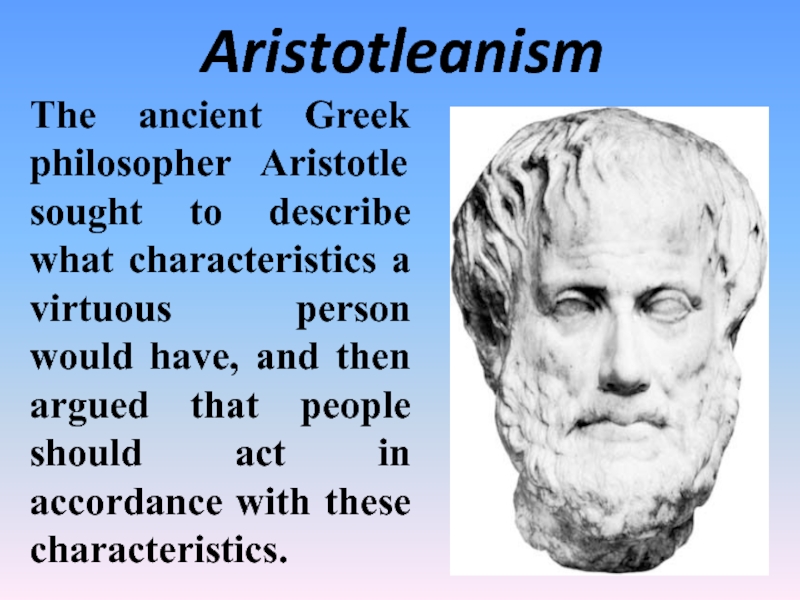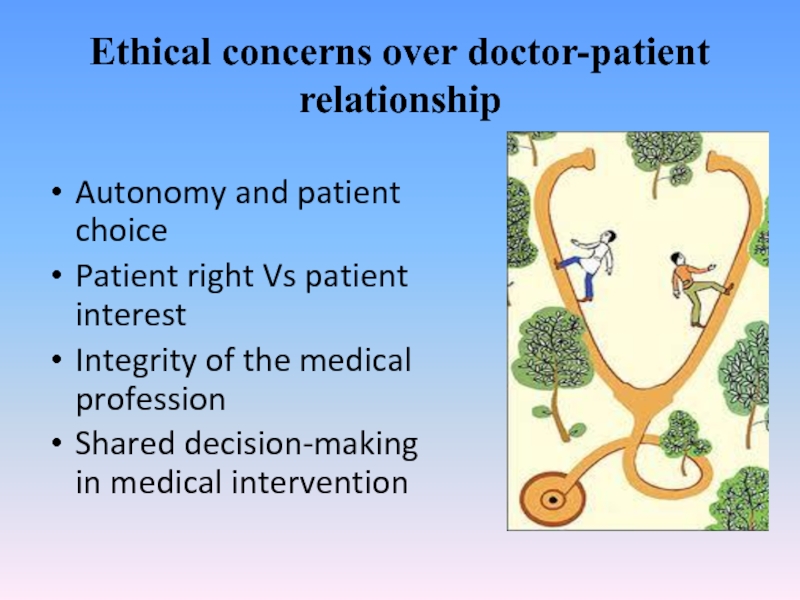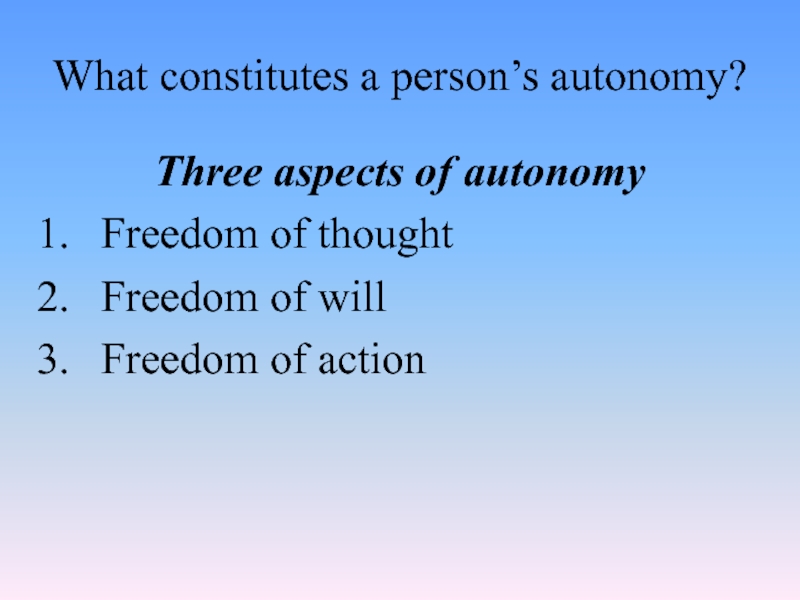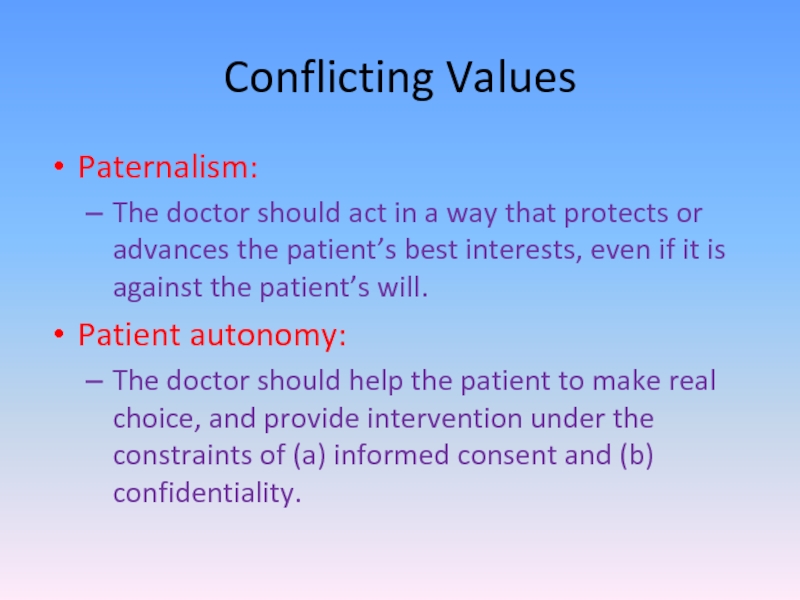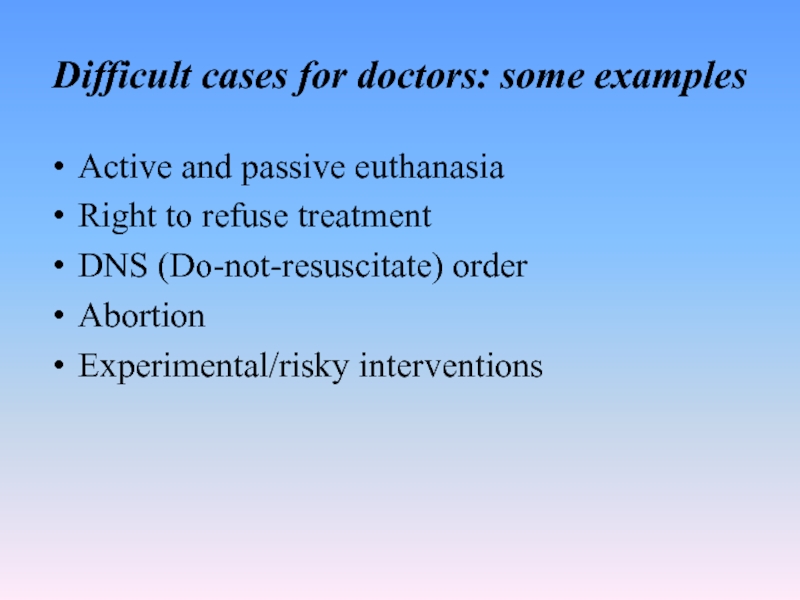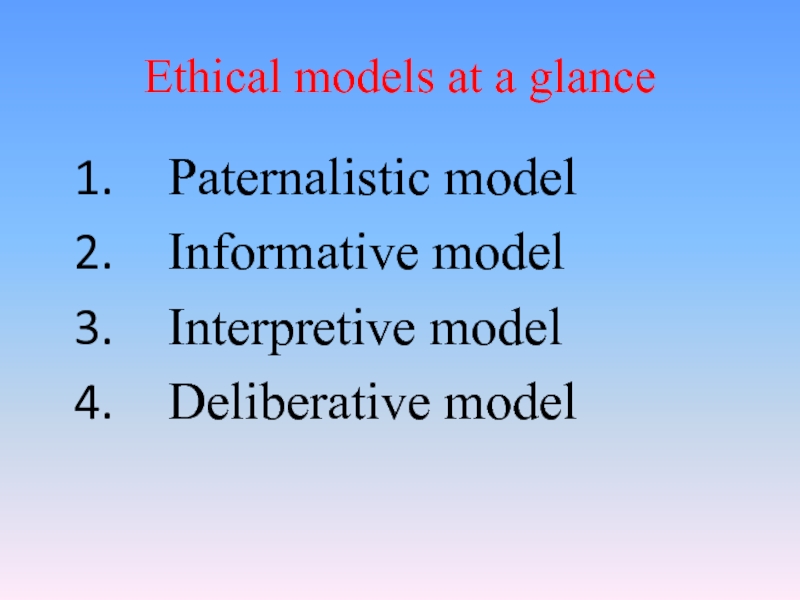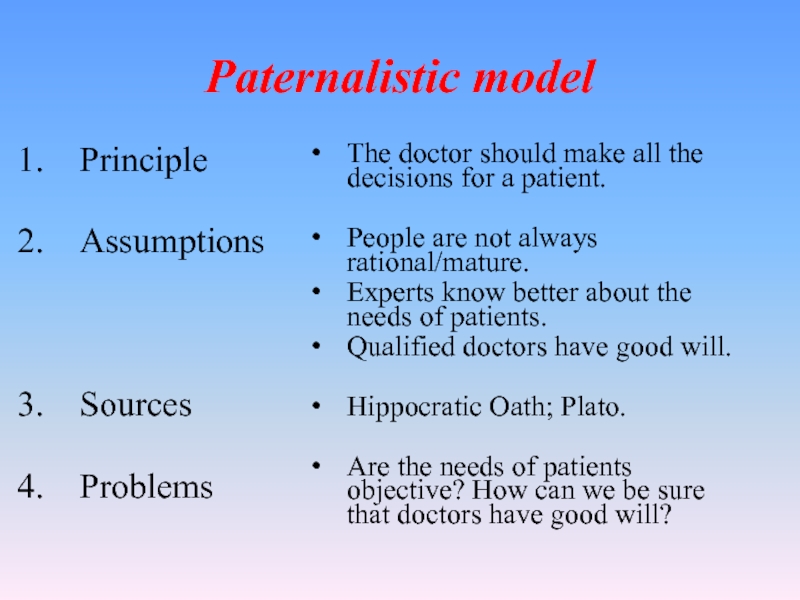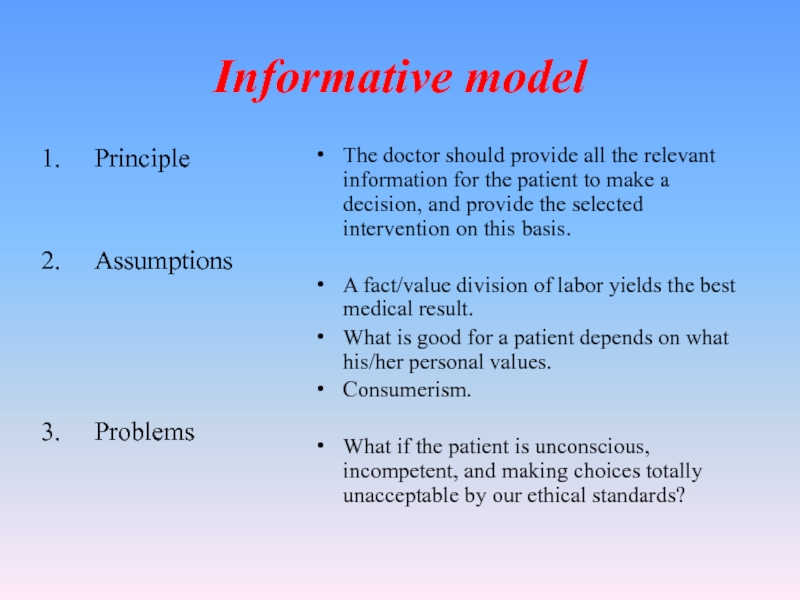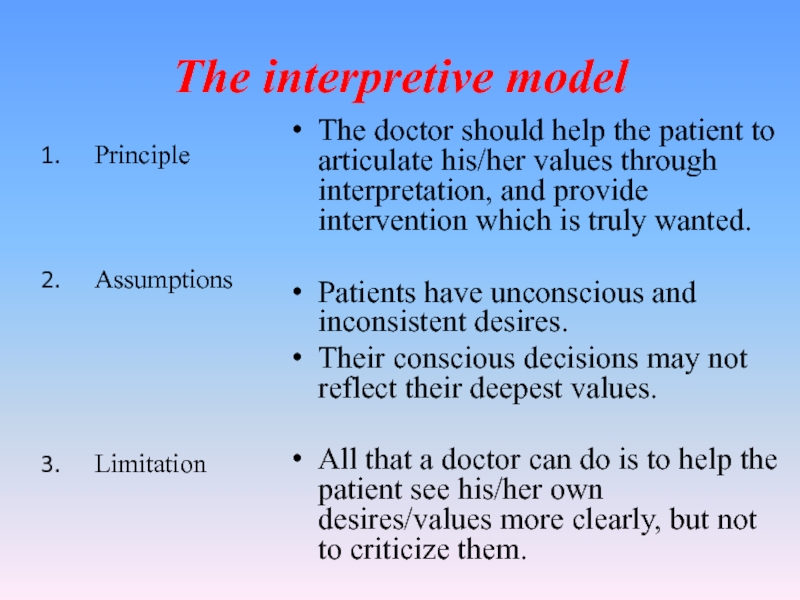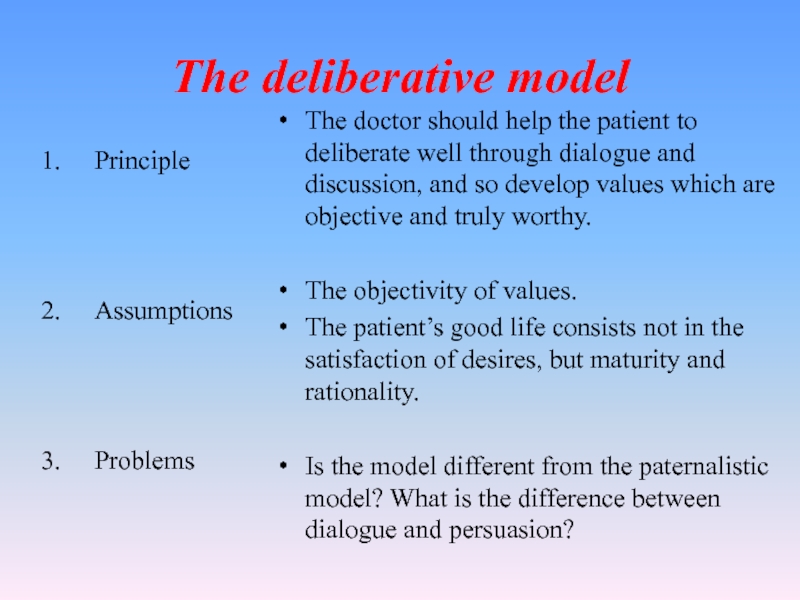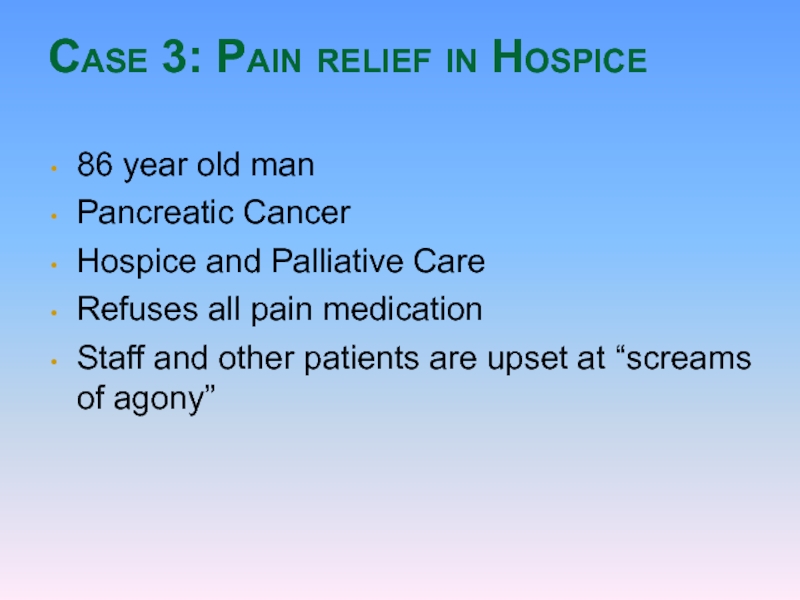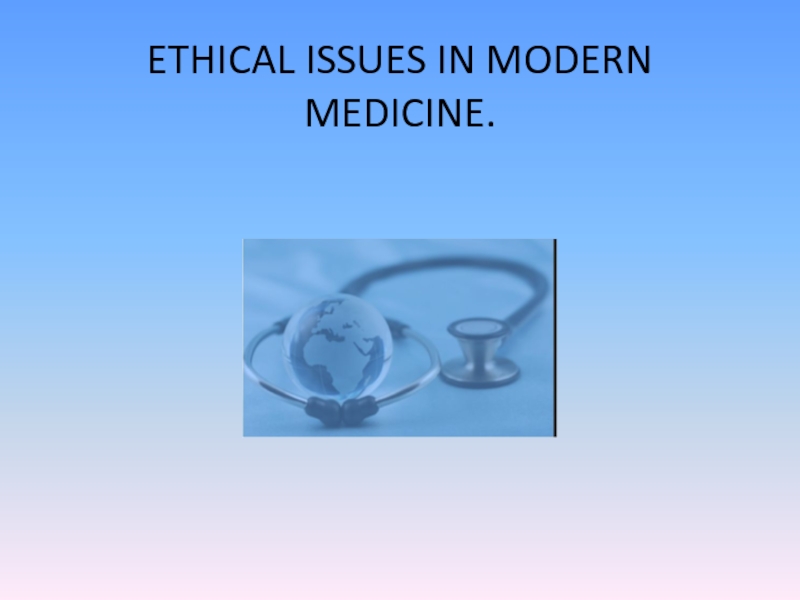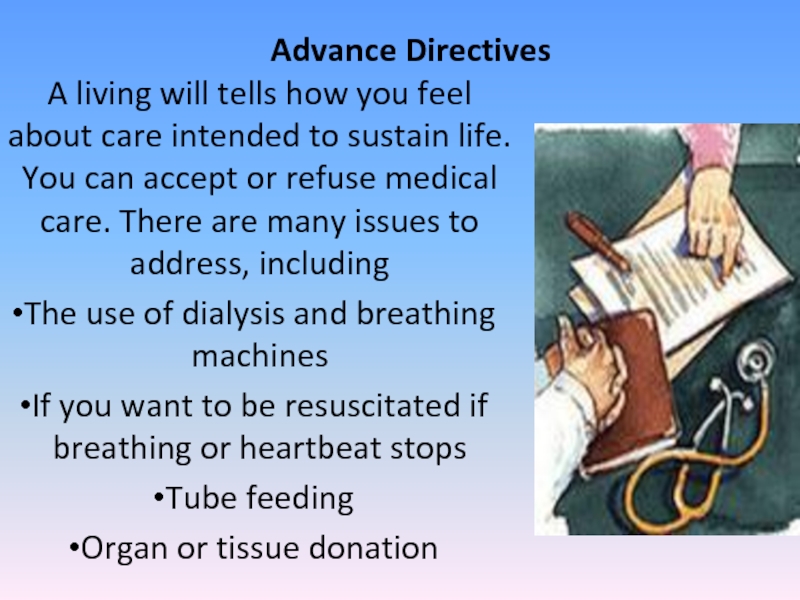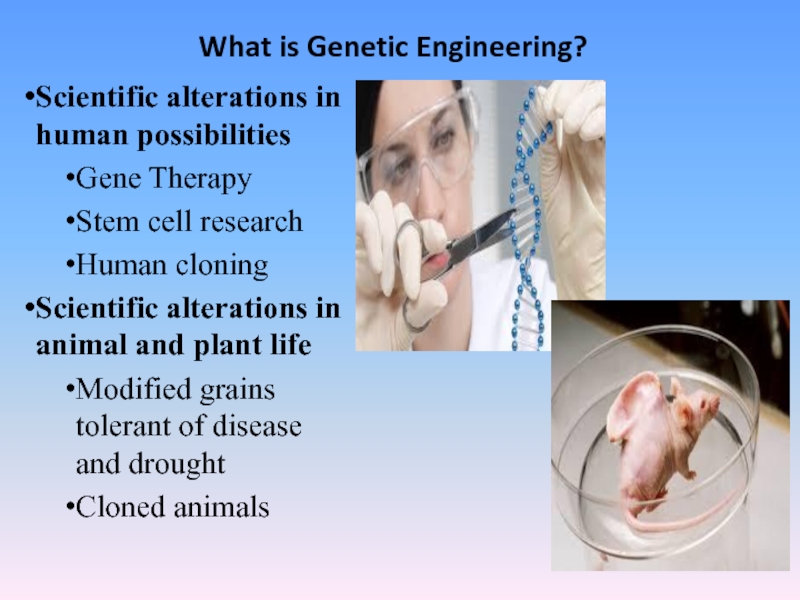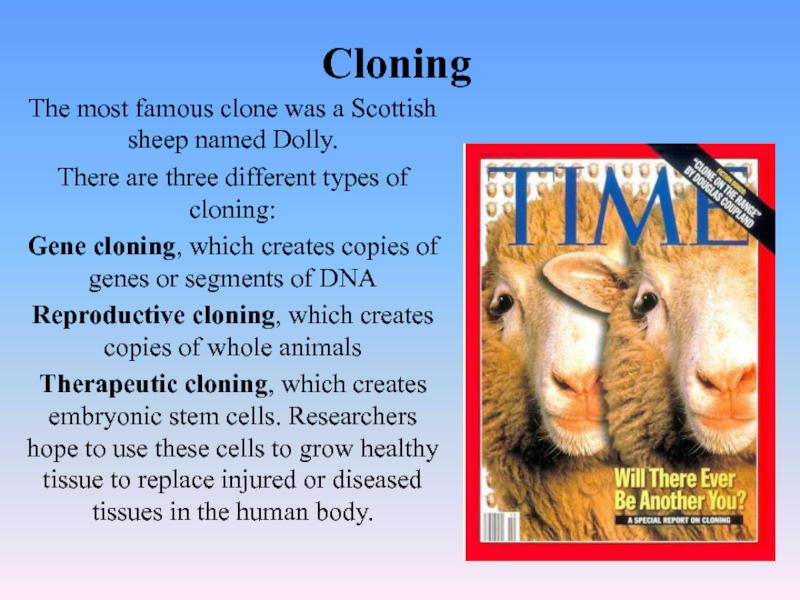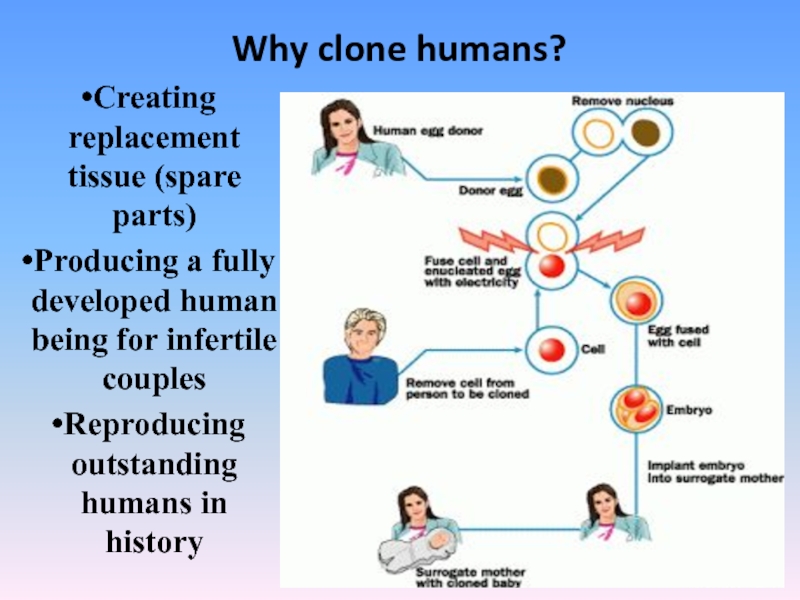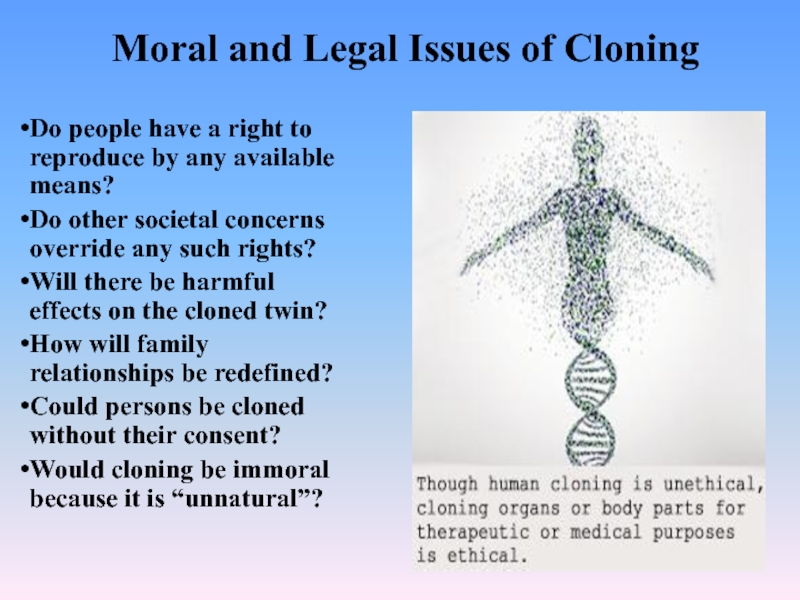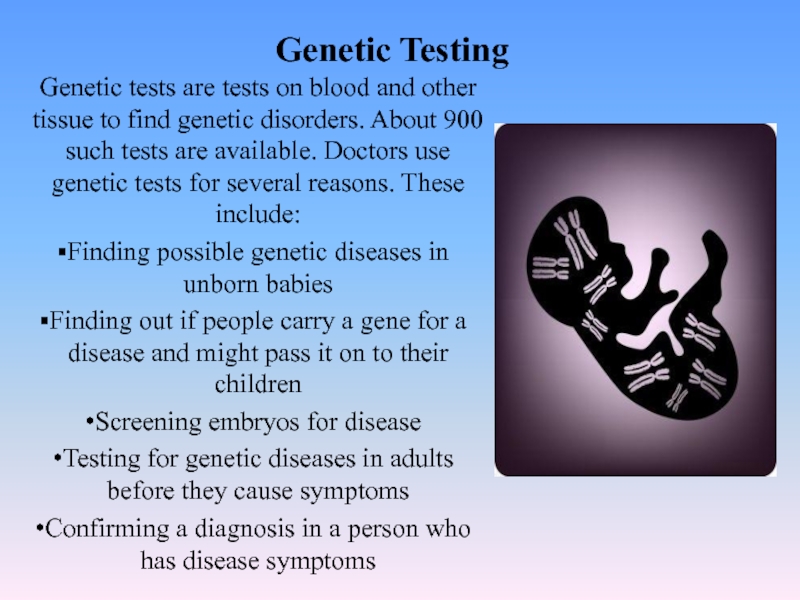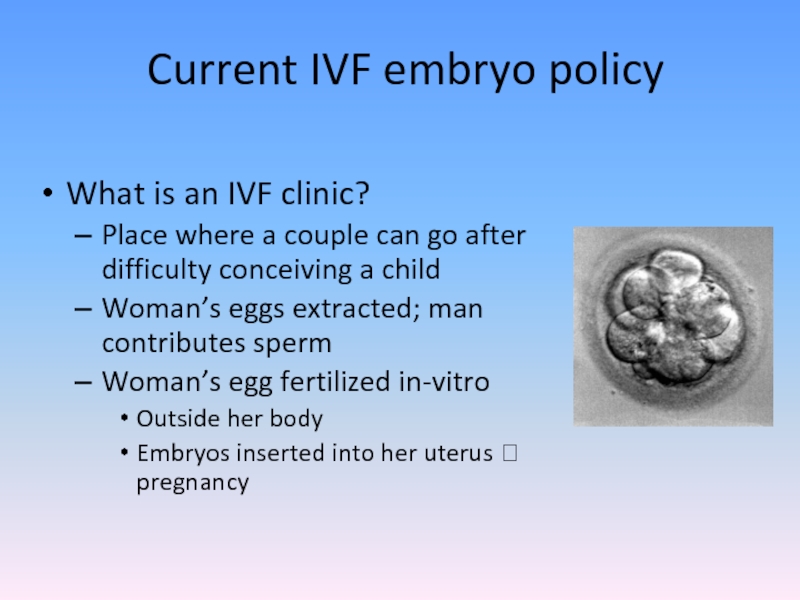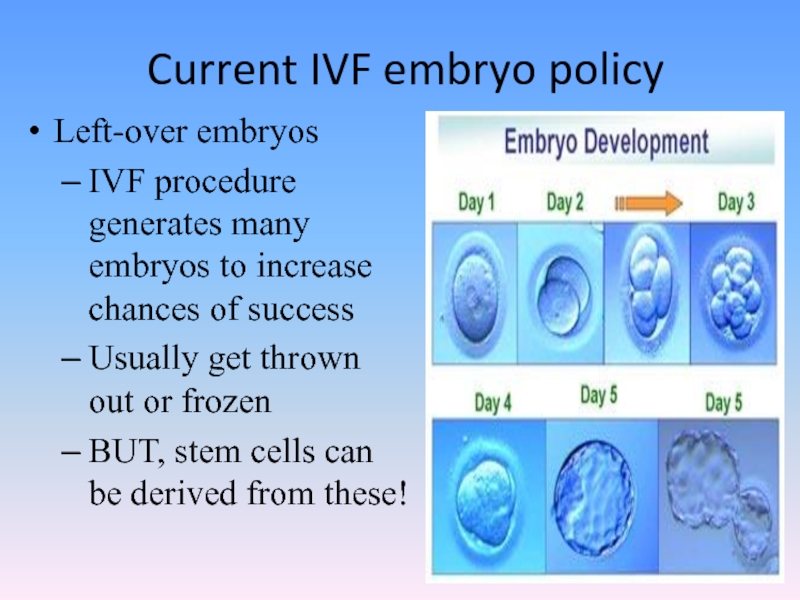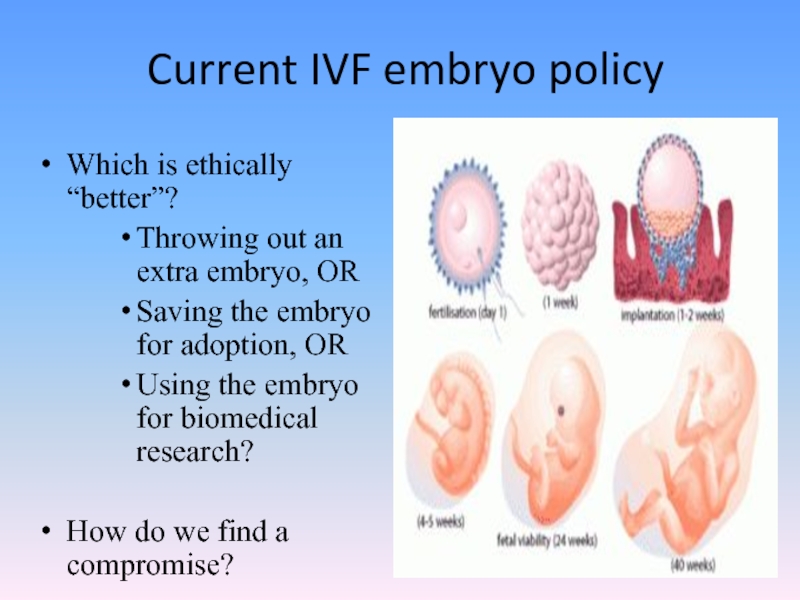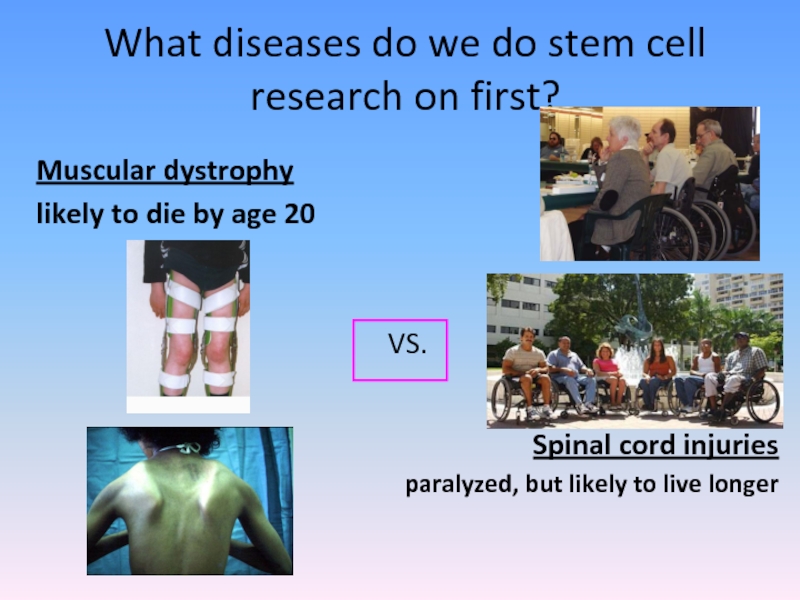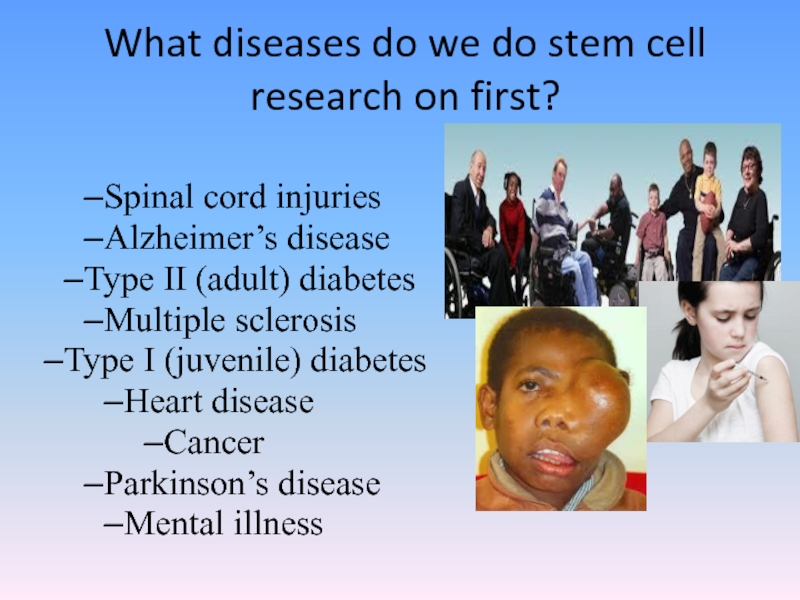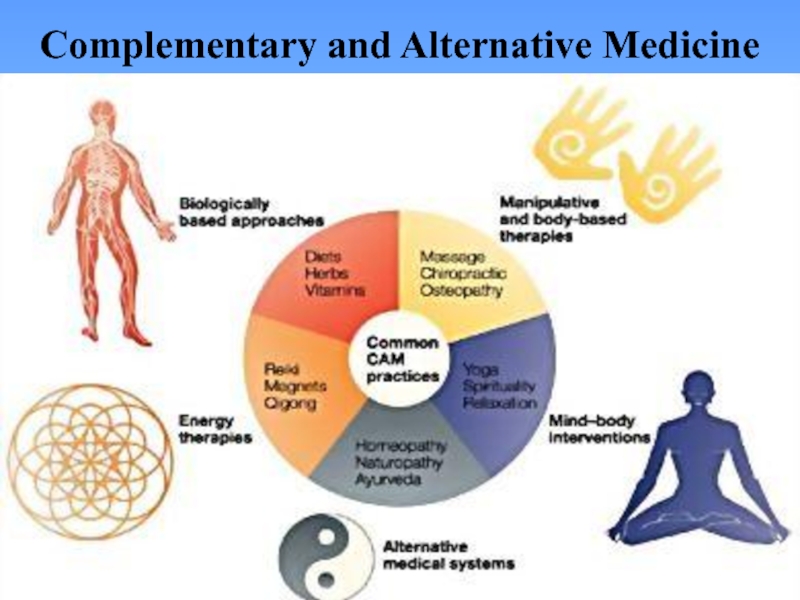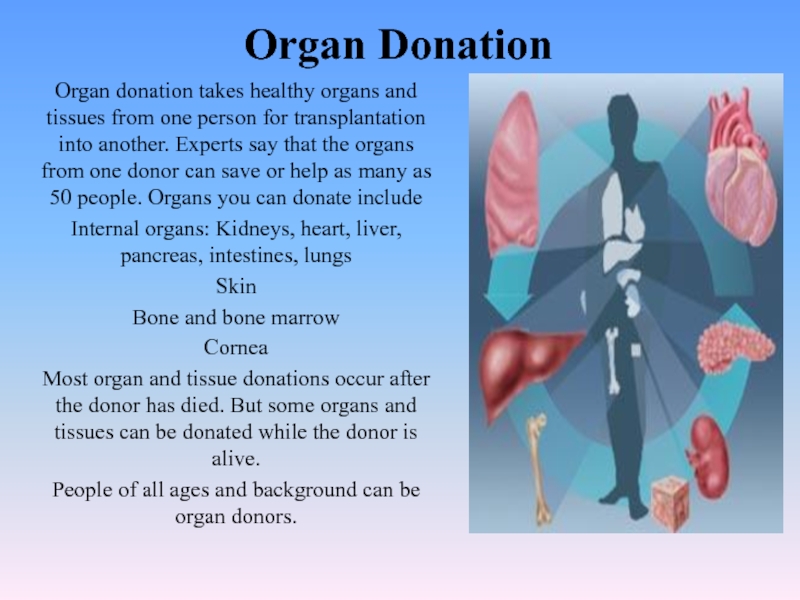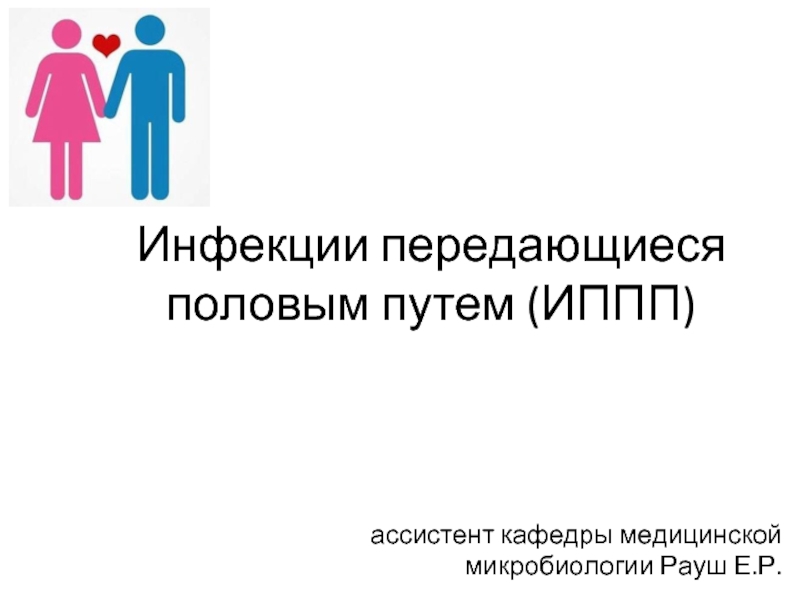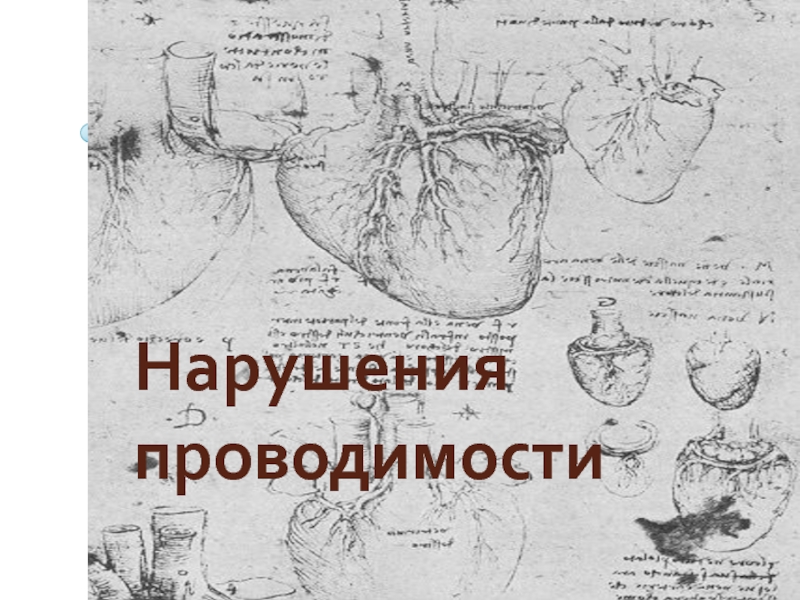ETICAL ISSUES IN MODERN MEDICINE.
- Главная
- Разное
- Дизайн
- Бизнес и предпринимательство
- Аналитика
- Образование
- Развлечения
- Красота и здоровье
- Финансы
- Государство
- Путешествия
- Спорт
- Недвижимость
- Армия
- Графика
- Культурология
- Еда и кулинария
- Лингвистика
- Английский язык
- Астрономия
- Алгебра
- Биология
- География
- Детские презентации
- Информатика
- История
- Литература
- Маркетинг
- Математика
- Медицина
- Менеджмент
- Музыка
- МХК
- Немецкий язык
- ОБЖ
- Обществознание
- Окружающий мир
- Педагогика
- Русский язык
- Технология
- Физика
- Философия
- Химия
- Шаблоны, картинки для презентаций
- Экология
- Экономика
- Юриспруденция
Bioethics: subject and purpose of study. Main bioethical theories and principles. Etical issues in modern medicine презентация
Содержание
- 1. Bioethics: subject and purpose of study. Main bioethical theories and principles. Etical issues in modern medicine
- 2. PLAN Definition of terms “ethics” and
- 3. What is “ethics”? Ethics: “the rules of
- 4. Bioethics: “a field of study concerned with
- 5. Bioethics is both a word and a
- 6. SUBJECT OF STUDY Bioethics is the study
- 7. SUBJECT OF STUDY It is a
- 8. SUBJECT OF STUDY Some of the most
- 9. A knowledge of bioethics will empower
- 10. A classic bioethical decision One heart available
- 11. A classic bioethical decision One heart available
- 12. IMPORTANCE OF BIOETHICS Ethics is not
- 14. There are wrong or morally bad laws
- 15. Ethical theories and principles are
- 16. Ethical Theory…to Action Theory Principle Rule Action
- 17. Principles in medical ethics Autonomy - the
- 18. Principles in medical ethics When moral values
- 19. Beneficence The term beneficence refers to
- 20. Beneficence These duties are viewed as self-evident
- 21. The Principle of Non-maleficence This is similar
- 22. Non-Maleficence "The treatment was a success, but the patient died."
- 23. Respect for Autonomy In the paternalistic
- 24. Respect for Autonomy A second way in
- 25. Case 1: Jehovah's witness 16 year old
- 27. Justice Justice in health care defined as
- 28. JUSTICE In fact, our society
- 29. JUSTICE John Rawls and others claim that
- 30. Double effect Double effect is usually regarded
- 31. Confidentiality Confidentiality is commonly applied to conversations
- 32. Ethical Theories Ethical theories
- 33. Two approaches to ethical theory Ethical
- 35. Deontological ethics Deontological, or duty-based,
- 36. This is what characterizes deontological ethical
- 37. CONSEQUENTIALISM Teleological methods, sometimes called consequentialist, are based on
- 38. ETHICAL EGOISM A moral theory that contends
- 39. Utilitarian Theories Moral theories that assert
- 40. Utilitarian decision- making relies on tools such
- 41. Aristotleanism The ancient Greek philosopher Aristotle sought
- 42. Virtuous traits are acquired and developed throughout
- 43. Prima facie duties When a person tries
- 44. Frances Kamm "Principle of Permissible Harm" The
- 45. Case 2: Volleyball Player Infection in her
- 46. Physician-Patient Relationship.
- 47. Ethical concerns over doctor-patient relationship Autonomy and
- 48. What constitutes a person’s autonomy? Three aspects
- 49. Conflicting Values Paternalism: The doctor should act
- 50. Difficult cases for doctors: some examples Active
- 51. Ethical models at a glance Paternalistic model Informative model Interpretive model Deliberative model
- 52. Paternalistic model Principle Assumptions
- 53. Informative model Principle Assumptions
- 54. The interpretive model Principle
- 55. The deliberative model Principle
- 56. Case 3: Pain relief in Hospice 86
- 57. ETHICAL ISSUES IN MODERN MEDICINE.
- 58. Advance Directives A living will tells
- 59. What is Genetic Engineering? Scientific alterations
- 60. Cloning The most famous clone was
- 61. Why clone humans? Creating replacement tissue
- 62. Moral and Legal Issues of Cloning
- 63. Genetic Testing Genetic tests are tests
- 64. Current IVF embryo policy What is an
- 65. Current IVF embryo policy Left-over embryos IVF
- 66. Current IVF embryo policy Which is
- 67. What diseases do we do stem cell
- 68. What diseases do we do stem cell
- 69. Complementary and Alternative Medicine
- 70. Organ Donation Organ donation takes healthy
- 71. Abortion Whether or not it is
- 72. Thank you for your attention!
Слайд 2PLAN
Definition of terms “ethics” and “bioethics”.
Subject of study.
Importance of bioethics.
Principles in
medical ethics.
Ethical theories.
Ethical issues in modern medicine.
Ethical theories.
Ethical issues in modern medicine.
Слайд 3What is “ethics”?
Ethics: “the rules of conduct recognized in respect to
a particular class of human actions or a particular group, culture”
Слайд 4Bioethics: “a field of study concerned with the ethics and philosophical
implications of certain biological and medical procedures, technologies, and treatments, such as organ transplants, genetic engineering, and care of the terminally ill”
Слайд 5Bioethics is both a word and a concept. The word comes
to us only from 1970 yet the concept comes from human heritage thousands of years old. Bioethics is love of life, balancing benefits and risks of choices and decisions. This heritage can be seen in all cultures, religions, and in ancient writings from around the world.
Слайд 6SUBJECT OF STUDY
Bioethics is the study of the ethical issues raised
by the biological and medical sciences, and of questions of life and death as they arise in the context of healthcare. It seeks to address question such as:
Is there a difference between killing and 'letting die'?
Is there anything wrong with human cloning?
Does society have an obligation to provide universal healthcare?
What are the social and political implications of the new genetic technologies?
Is there a difference between killing and 'letting die'?
Is there anything wrong with human cloning?
Does society have an obligation to provide universal healthcare?
What are the social and political implications of the new genetic technologies?
Слайд 7SUBJECT OF STUDY
It is a fact of modern life that most
individuals will, at some stage of their lives, face decisions which involve fundamental questions in bioethics. Whether it's choosing whether or not to have a child, deciding to become an organ donor, considering being tested for a genetic condition, or making a decision about the care of elderly parents, most of us will not be able to avoid confronting bioethical issues.
Слайд 8SUBJECT OF STUDY
Some of the most controversial and important public issues
today are also questions of bioethics:
What should the law say about abortion?
Is there enough funding for public hospitals?
Should the government fund stem cell research involving human embryos?
What should the law say about abortion?
Is there enough funding for public hospitals?
Should the government fund stem cell research involving human embryos?
Слайд 9
A knowledge of bioethics will empower you to make these decisions
and to participate in these debates in an informed, critical and effective manner.
Слайд 10A classic bioethical decision
One heart available ? who should get it?
17-year
old girl
40-year-old school principal
70-year-old woman
Слайд 11A classic bioethical decision
One heart available ? who should get it?
17-year
old girl
40-year-old man
70-year-old woman
Слайд 12IMPORTANCE OF BIOETHICS
Ethics is not the study of what is legal
or socially accepted or tolerated; it is the study of what is right and wrong.
Слайд 14There are wrong or morally bad laws and rules.
Sometimes they
are so bad that obedience to them is a greater moral transgression than disobedience.
Слайд 15
Ethical theories and principles are the foundations of ethical analysis.
Ethical
principles are the common goals that each theory tries to achieve in order to be successful.
Слайд 17Principles in medical ethics
Autonomy - the patient has the right to
refuse or choose his treatment.
(Voluntas aegroti suprema lex.)
Benificence - a practitioner should act in the best interest of the patient.
(Salus aegroti suprema lex.)
Non-maleficence - "first, do no harm" (primum non nocere).
Justice - concerns the distribution of scarce health resources, and the decision of who gets what treatment (fairness and equality).
(Voluntas aegroti suprema lex.)
Benificence - a practitioner should act in the best interest of the patient.
(Salus aegroti suprema lex.)
Non-maleficence - "first, do no harm" (primum non nocere).
Justice - concerns the distribution of scarce health resources, and the decision of who gets what treatment (fairness and equality).
Слайд 18Principles in medical ethics
When moral values are in conflict, the result
may be an ethical dilemma or crisis.
Слайд 19Beneficence
The term beneficence refers to actions that promote the well being
of others.
In the medical context, this means taking actions that serve the best interests of patients.
In the medical context, this means taking actions that serve the best interests of patients.
Слайд 20Beneficence
These duties are viewed as self-evident and are widely accepted as
the proper goals of medicine.
The author of this principle – PARACELS.
The author of this principle – PARACELS.
Слайд 21The Principle of Non-maleficence
This is similar to beneficence, but deals with
situations in which neither choice is beneficial. In this case, a person should choose to do the least harm possible and to do harm to the fewest people.
Слайд 23Respect for Autonomy
In the paternalistic viewpoint, an authority prioritizes a dependent
person's best interests over the dependent person's wishes.
Слайд 24Respect for Autonomy
A second way in which to view the respect
for autonomy is the libertarian view. This standpoint prioritizes the patient's wishes over their best interests.
Слайд 25Case 1: Jehovah's witness
16 year old male
Car accident
Requires surgery
Parents will
not allow blood products to be used
Patient refuses blood products
Patient refuses blood products
Слайд 27Justice
Justice in health care defined as a form of fairness, or
as Aristotle said, "giving to each that which is his due.“
Persons who are equals should qualify for equal treatment
Persons who are equals should qualify for equal treatment
Слайд 28JUSTICE
In fact, our society uses a variety of factors
as a criteria for distributive justice, including the following:
to each person an equal share
to each person according to need
to each person according to effort
to each person according to contribution
to each person according to merit
to each person according to free-market exchanges
to each person an equal share
to each person according to need
to each person according to effort
to each person according to contribution
to each person according to merit
to each person according to free-market exchanges
Слайд 29JUSTICE
John Rawls and others claim that many of the inequalities we
experience are a result of a "natural lottery" or a "social lottery". One of the most controversial issues in modern health care is the question pertaining to "who has the right to health care?"
Слайд 30Double effect
Double effect is usually regarded as the combined effect of
beneficence and non-maleficence.
MORPHINE
Beneficial effect - easing the pain and suffering of the patient,
Maleficent effect - hastening the death of the patient through suppression of the respiratory system.
MORPHINE
Beneficial effect - easing the pain and suffering of the patient,
Maleficent effect - hastening the death of the patient through suppression of the respiratory system.
Слайд 31Confidentiality
Confidentiality is commonly applied to conversations between doctors and patients. This
concept is commonly known as patient-physician privilege.
Legal protections prevent physicians from revealing their discussions with patients, even under oath in court.
Legal protections prevent physicians from revealing their discussions with patients, even under oath in court.
Слайд 32
Ethical Theories
Ethical theories are based on the previously explained ethical
principles.
People usually base their individual choice of ethical theory upon their life experiences
People usually base their individual choice of ethical theory upon their life experiences
Слайд 33Two approaches to ethical theory
Ethical theory in turn divides into
two main
types or approaches:
virtue ethics: begins by considering what makes a person (or his/her character or motives) morally good (Aristotle, Hume)
duty ethics: focuses on rules or acts and what makes them right (Mill, Kant, Rawls)
types or approaches:
virtue ethics: begins by considering what makes a person (or his/her character or motives) morally good (Aristotle, Hume)
duty ethics: focuses on rules or acts and what makes them right (Mill, Kant, Rawls)
Слайд 35Deontological ethics
Deontological, or duty-based, ethical systems, are those that
simply claim, what the fundamental ethical duties are.
The Ten Commandments - examples of deontological ethical thinking. The Ten Commandments say that some actions are just plain right and others are just plain wrong.
The Ten Commandments - examples of deontological ethical thinking. The Ten Commandments say that some actions are just plain right and others are just plain wrong.
Слайд 36
This is what characterizes deontological ethical methods: they simply state that
some things are right or wrong. Some things are your duty to do (Greek deon: duty) and other things are your duty to avoid.
Human Rights documents, for example, are instances of deontological thinking.
Human Rights documents, for example, are instances of deontological thinking.
Слайд 37CONSEQUENTIALISM
Teleological methods, sometimes called consequentialist, are based on estimating what the likely outcomes
of a given course of action will be, and then choosing the method that has the most positive consequences and the fewest negative consequences.
Слайд 38ETHICAL EGOISM
A moral theory that contends all choices either involve or
should involve self-promotion as their sole objective.
Ethical egoists believe that people should not be their brother’s keeper, because people do not completely understand the true needs of others.
It’s every man for himself in this world!
Ethical egoists believe that people should not be their brother’s keeper, because people do not completely understand the true needs of others.
It’s every man for himself in this world!
Слайд 39Utilitarian Theories
Moral theories that assert an action’s rightness is determined by
the actual or probable consequences that the action will have for the greatest number of people affected by that action.
An action or practice is right if it leads to the best possible balance of good consequences over bad consequences for all the parties affected.
An action or practice is right if it leads to the best possible balance of good consequences over bad consequences for all the parties affected.
Слайд 40Utilitarian decision-
making relies on tools such as cost-benefit analysis and risk
assessment to determine the greatest utility.
Example - Superman.
Example - Superman.
Слайд 41Aristotleanism
The ancient Greek philosopher Aristotle sought to describe what characteristics a
virtuous person would have, and then argued that people should act in accordance with these characteristics.
Слайд 42Virtuous traits are acquired and developed throughout our life experiences.
A primary
problem with this theory is that people have varying definitions of what traits are considered virtuous.
One weakness of this ethical theory is that it does not take into consideration a person's change in moral character.
One weakness of this ethical theory is that it does not take into consideration a person's change in moral character.
Слайд 43Prima facie duties
When a person tries to decide how to act,
each of these duties need to be taken into consideration when deciding which duty should be acted upon.
Слайд 44Frances Kamm
"Principle of Permissible Harm"
The Principle states that one may harm
in order to save more if and only if the harm is an effect or an aspect of the greater good itself.
Слайд 45Case 2: Volleyball Player
Infection in her leg
60% Chance of recovery with
antibiotics alone
80% Chance of recovery with antibiotics and amputation of the leg
Parents want doctors to amputate the leg, patient would like to only take antibiotics
80% Chance of recovery with antibiotics and amputation of the leg
Parents want doctors to amputate the leg, patient would like to only take antibiotics
Слайд 47Ethical concerns over doctor-patient relationship
Autonomy and patient choice
Patient right Vs patient
interest
Integrity of the medical profession
Shared decision-making in medical intervention
Integrity of the medical profession
Shared decision-making in medical intervention
Слайд 48What constitutes a person’s autonomy?
Three aspects of autonomy
Freedom of thought
Freedom of
will
Freedom of action
Freedom of action
Слайд 49Conflicting Values
Paternalism:
The doctor should act in a way that protects or
advances the patient’s best interests, even if it is against the patient’s will.
Patient autonomy:
The doctor should help the patient to make real choice, and provide intervention under the constraints of (a) informed consent and (b) confidentiality.
Patient autonomy:
The doctor should help the patient to make real choice, and provide intervention under the constraints of (a) informed consent and (b) confidentiality.
Слайд 50Difficult cases for doctors: some examples
Active and passive euthanasia
Right to refuse
treatment
DNS (Do-not-resuscitate) order
Abortion
Experimental/risky interventions
DNS (Do-not-resuscitate) order
Abortion
Experimental/risky interventions
Слайд 51Ethical models at a glance
Paternalistic model
Informative model
Interpretive model
Deliberative model
Слайд 52Paternalistic model
Principle
Assumptions
Sources
Problems
The doctor should make all the decisions for a
patient.
People are not always rational/mature.
Experts know better about the needs of patients.
Qualified doctors have good will.
Hippocratic Oath; Plato.
Are the needs of patients objective? How can we be sure that doctors have good will?
People are not always rational/mature.
Experts know better about the needs of patients.
Qualified doctors have good will.
Hippocratic Oath; Plato.
Are the needs of patients objective? How can we be sure that doctors have good will?
Слайд 53Informative model
Principle
Assumptions
Problems
The doctor should provide all the relevant information for the
patient to make a decision, and provide the selected intervention on this basis.
A fact/value division of labor yields the best medical result.
What is good for a patient depends on what his/her personal values.
Consumerism.
What if the patient is unconscious, incompetent, and making choices totally unacceptable by our ethical standards?
A fact/value division of labor yields the best medical result.
What is good for a patient depends on what his/her personal values.
Consumerism.
What if the patient is unconscious, incompetent, and making choices totally unacceptable by our ethical standards?
Слайд 54The interpretive model
Principle
Assumptions
Limitation
The doctor should help the patient to articulate his/her
values through interpretation, and provide intervention which is truly wanted.
Patients have unconscious and inconsistent desires.
Their conscious decisions may not reflect their deepest values.
All that a doctor can do is to help the patient see his/her own desires/values more clearly, but not to criticize them.
Patients have unconscious and inconsistent desires.
Their conscious decisions may not reflect their deepest values.
All that a doctor can do is to help the patient see his/her own desires/values more clearly, but not to criticize them.
Слайд 55The deliberative model
Principle
Assumptions
Problems
The doctor should help the patient to deliberate well
through dialogue and discussion, and so develop values which are objective and truly worthy.
The objectivity of values.
The patient’s good life consists not in the satisfaction of desires, but maturity and rationality.
Is the model different from the paternalistic model? What is the difference between dialogue and persuasion?
The objectivity of values.
The patient’s good life consists not in the satisfaction of desires, but maturity and rationality.
Is the model different from the paternalistic model? What is the difference between dialogue and persuasion?
Слайд 56Case 3: Pain relief in Hospice
86 year old man
Pancreatic Cancer
Hospice and
Palliative Care
Refuses all pain medication
Staff and other patients are upset at “screams of agony”
Refuses all pain medication
Staff and other patients are upset at “screams of agony”
Слайд 58Advance Directives
A living will tells how you feel about care
intended to sustain life. You can accept or refuse medical care. There are many issues to address, including
The use of dialysis and breathing machines
If you want to be resuscitated if breathing or heartbeat stops
Tube feeding
Organ or tissue donation
The use of dialysis and breathing machines
If you want to be resuscitated if breathing or heartbeat stops
Tube feeding
Organ or tissue donation
Слайд 59What is Genetic Engineering?
Scientific alterations in human possibilities
Gene Therapy
Stem cell research
Human
cloning
Scientific alterations in animal and plant life
Modified grains tolerant of disease and drought
Cloned animals
Scientific alterations in animal and plant life
Modified grains tolerant of disease and drought
Cloned animals
Слайд 60Cloning
The most famous clone was a Scottish sheep named Dolly.
There
are three different types of cloning:
Gene cloning, which creates copies of genes or segments of DNA
Reproductive cloning, which creates copies of whole animals
Therapeutic cloning, which creates embryonic stem cells. Researchers hope to use these cells to grow healthy tissue to replace injured or diseased tissues in the human body.
Gene cloning, which creates copies of genes or segments of DNA
Reproductive cloning, which creates copies of whole animals
Therapeutic cloning, which creates embryonic stem cells. Researchers hope to use these cells to grow healthy tissue to replace injured or diseased tissues in the human body.
Слайд 61Why clone humans?
Creating replacement tissue (spare parts)
Producing a fully developed human
being for infertile couples
Reproducing outstanding humans in history
Reproducing outstanding humans in history
Слайд 62Moral and Legal Issues of Cloning
Do people have a right to
reproduce by any available means?
Do other societal concerns override any such rights?
Will there be harmful effects on the cloned twin?
How will family relationships be redefined?
Could persons be cloned without their consent?
Would cloning be immoral because it is “unnatural”?
Do other societal concerns override any such rights?
Will there be harmful effects on the cloned twin?
How will family relationships be redefined?
Could persons be cloned without their consent?
Would cloning be immoral because it is “unnatural”?
Слайд 63Genetic Testing
Genetic tests are tests on blood and other tissue
to find genetic disorders. About 900 such tests are available. Doctors use genetic tests for several reasons. These include:
Finding possible genetic diseases in unborn babies
Finding out if people carry a gene for a disease and might pass it on to their children
Screening embryos for disease
Testing for genetic diseases in adults before they cause symptoms
Confirming a diagnosis in a person who has disease symptoms
Finding possible genetic diseases in unborn babies
Finding out if people carry a gene for a disease and might pass it on to their children
Screening embryos for disease
Testing for genetic diseases in adults before they cause symptoms
Confirming a diagnosis in a person who has disease symptoms
Слайд 64Current IVF embryo policy
What is an IVF clinic?
Place where a couple
can go after difficulty conceiving a child
Woman’s eggs extracted; man contributes sperm
Woman’s egg fertilized in-vitro
Outside her body
Embryos inserted into her uterus ? pregnancy
Woman’s eggs extracted; man contributes sperm
Woman’s egg fertilized in-vitro
Outside her body
Embryos inserted into her uterus ? pregnancy
Слайд 65Current IVF embryo policy
Left-over embryos
IVF procedure generates many embryos to increase
chances of success
Usually get thrown out or frozen
BUT, stem cells can be derived from these!
Usually get thrown out or frozen
BUT, stem cells can be derived from these!
Слайд 66Current IVF embryo policy
Which is ethically “better”?
Throwing out an extra
embryo, OR
Saving the embryo for adoption, OR
Using the embryo for biomedical research?
How do we find a compromise?
Saving the embryo for adoption, OR
Using the embryo for biomedical research?
How do we find a compromise?
Слайд 67What diseases do we do stem cell research on first?
Muscular dystrophy
likely
to die by age 20
VS.
Spinal cord injuries
paralyzed, but likely to live longer
VS.
Spinal cord injuries
paralyzed, but likely to live longer
Слайд 68What diseases do we do stem cell research on first?
Spinal cord
injuries
Alzheimer’s disease
Type II (adult) diabetes
Multiple sclerosis
Type I (juvenile) diabetes
Heart disease
Cancer
Parkinson’s disease
Mental illness
Alzheimer’s disease
Type II (adult) diabetes
Multiple sclerosis
Type I (juvenile) diabetes
Heart disease
Cancer
Parkinson’s disease
Mental illness
Слайд 70Organ Donation
Organ donation takes healthy organs and tissues from one
person for transplantation into another. Experts say that the organs from one donor can save or help as many as 50 people. Organs you can donate include
Internal organs: Kidneys, heart, liver, pancreas, intestines, lungs
Skin
Bone and bone marrow
Cornea
Most organ and tissue donations occur after the donor has died. But some organs and tissues can be donated while the donor is alive.
People of all ages and background can be organ donors.
Internal organs: Kidneys, heart, liver, pancreas, intestines, lungs
Skin
Bone and bone marrow
Cornea
Most organ and tissue donations occur after the donor has died. But some organs and tissues can be donated while the donor is alive.
People of all ages and background can be organ donors.
Слайд 71Abortion
Whether or not it is moral, should abortion be legal?
Generally prohibited but with some exceptions?
Should it be regulated?
Is it a free choice to seek abortion in desperation because of poverty, violence, or lack of support?
What should be the community and policy response to women who feel unable to give birth to their children?
And what is the role of the father in decisions about abortion?

